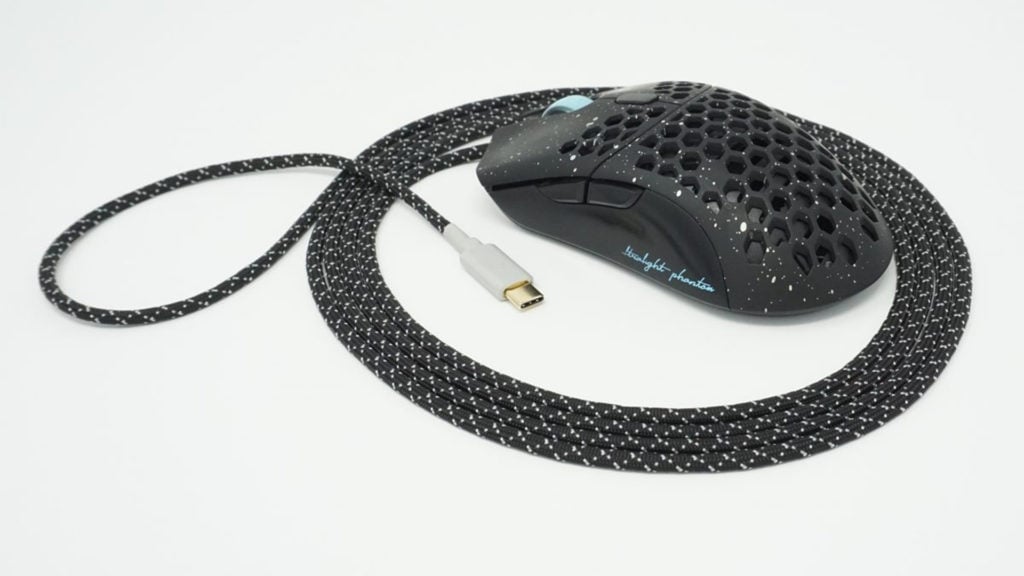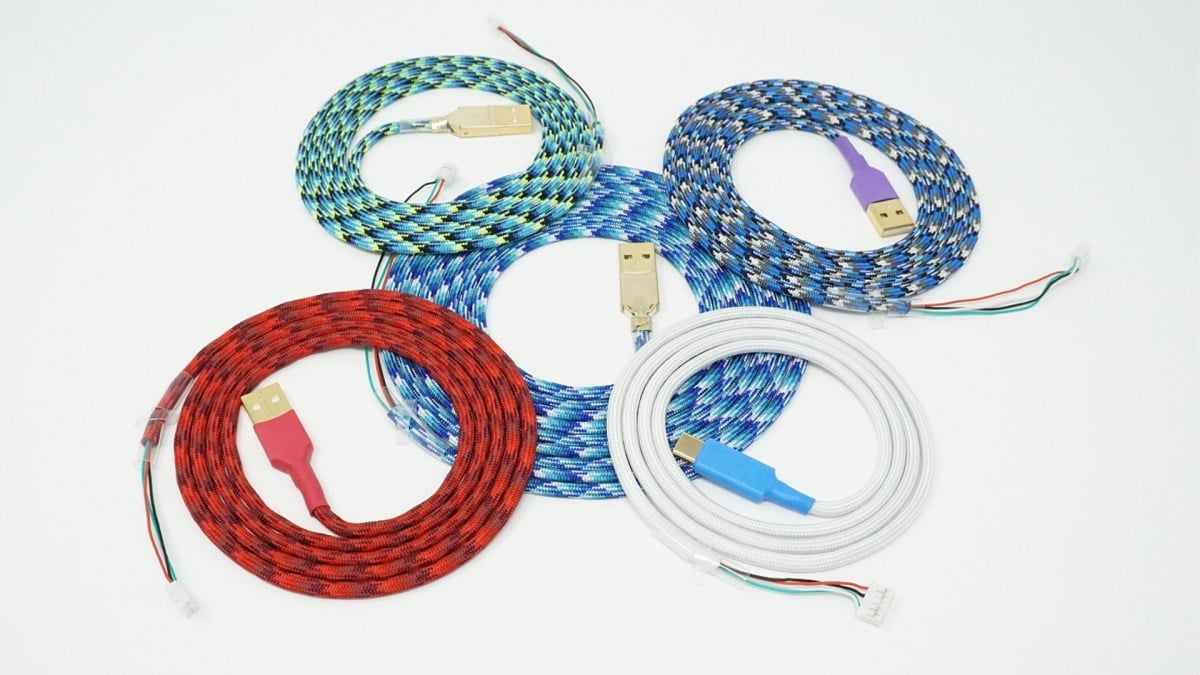Some of the best gaming equipment available uses a wired connection. Still, many gamers worry about cables becoming twisted and breaking the internal wires that keep their device working correctly. Of the gaming peripherals available, mouse cables are among the most notorious for breaking. However, mouse manufacturers have turned to a solution for heavily used gaming mice—paracord cables.
What is paracord?

Paracord is a long woven or braided cord used in a variety of different applications. Typically made of nylon, paracord was made famous in the military for its strength and durability. It is classified as a kern mantle rope, which is a rope with a core and an outer shell. Some paracord is so strong that it can hold over 700 pounds.
Its strength comes from its internal structure, a core cord made of several nylon strands wrapped in an outer shell made of more nylon strands. The core cord acts as the main channel for the paracord, while the outer shell protects the core cord and increases the overall strength of the paracord. Nylon, an artificial material, is designed to stretch, which helps increase the durability of the paracord. However, paracord’s durability isn’t the only benefit of using it as a mouse cable.
Benefits of paracord mouse cables
A gaming mouse with a paracord is the closest thing to a wireless mouse, thanks in part to how malleable and light the cables are. Braided cables, like paracord, add more durability than regular plastic cords. Yet, though they look similar, braided cables are heavier and more rigid in comparison to paracord. Nylon strands wrapped around a metallic sheath are the typical construction of a braided cable, with the metallic sheath protecting the connector wires of the mouse.
However, the metallic sheath adds rigidity, the opposite of what gamers look for in a gaming mouse. Paracord, in contrast, is lighter than either standard mouse cable or braided cable, making for an overall lighter mouse. The reduced weight helps during gaming sessions when trying to flick a headshot or otherwise wide-sweeping maneuvers.
In addition to the reduced weight, paracords offer less drag than traditional rubber gaming mouse cables. Nylon has far less friction than rubber, making movement on the mouse pad easier. Players usually have a bungee or anchor to prevent the cord from bunching up underneath the mouse during gameplay.

A lightweight mouse with almost frictionless feet paired with a paracord could emulate the freedom of a wireless mouse without the inherent input lag. Nylon is also an easily dyed material, allowing for more colorful types of paracord.
Another benefit of paracord is creating and replacing the cord of a mouse right at home. A spool of nylon thread is relatively inexpensive (usually $4.99 per 100 feet), meaning practically anyone could get started making custom paracord cables. Though, to make one will require patience and an informative tutorial for first-time paracord creators.
Overall, a gaming mouse with a paracord is faster, lighter, and more durable than standard gaming cables. Given the benefits, it’s clear why so many gamers have made the switch to paracord for their wired gaming mouse of choice.

